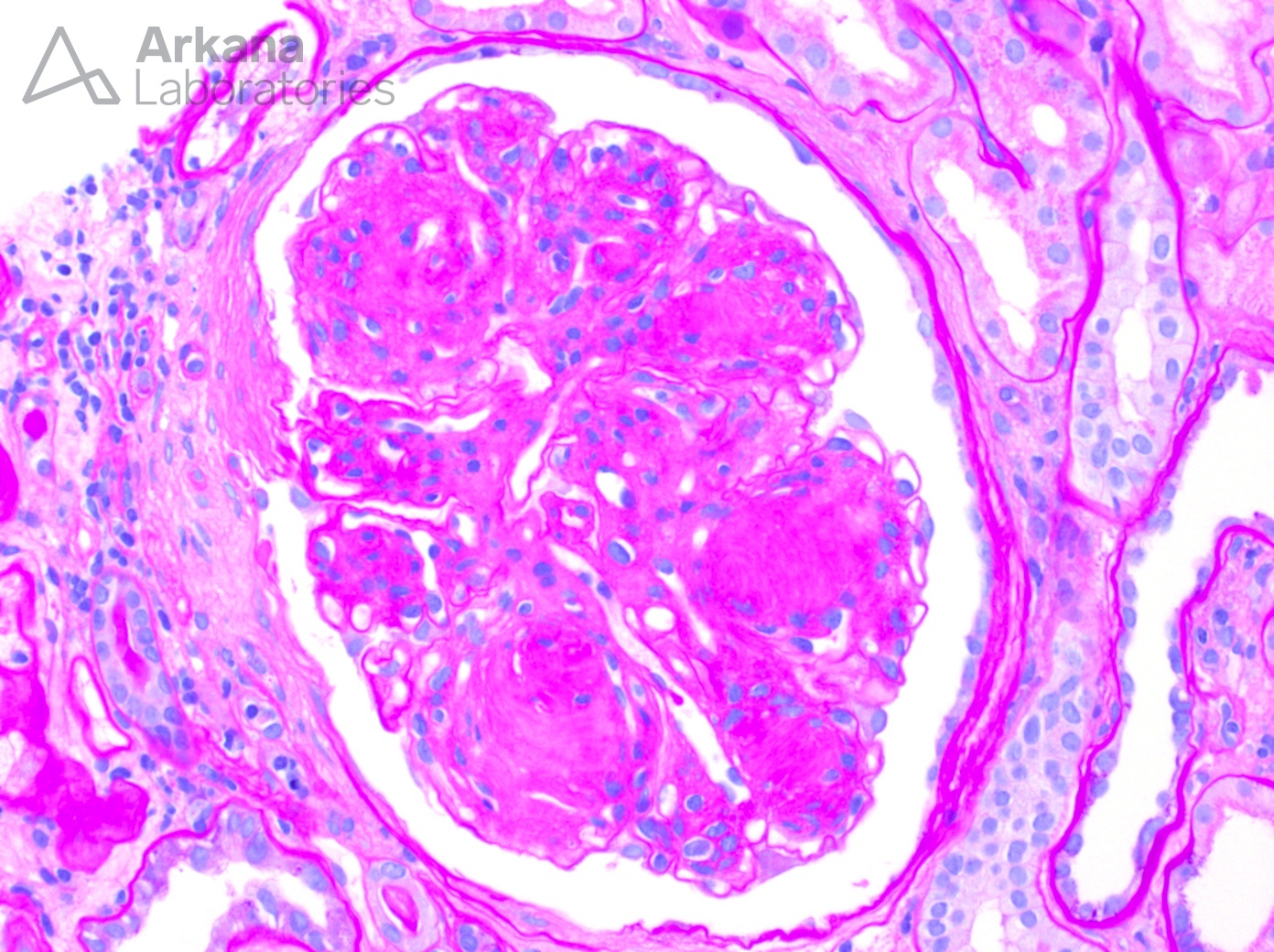
What is the most likely diagnosis? For bonus points, what is the basic differential for this morphologic finding (non-immune and immune)?
The biopsy shows mesangial matrix expansion with large nodule formation that is consistent with nodular glomerulosclerosis. The most common etiology of nodular glomerulosclerosis is diabetic glomerulopathy (Kimmelstiel-Wilson nodules) which was the diagnosis in this case. However, the differential diagnosis in the absence of immune complex deposits includes idiopathic nodular glomerulosclerosis (smoking and hypertension-related) and glomerular changes secondary to gout (somewhat controversial). This disease can also occur in context of immune complex deposition as seen in monoclonal immunoglobulin deposition disease. It is important to remember that any type of extensive mesangial expansion can mimic nodule formation such as in amyloidosis, fibrillary glomerulopathy, and collagenofibrotic glomerulopathy as well as several others.
Quick note: This post is to be used for informational purposes only and does not constitute medical or health advice. Each person should consult their own doctor with respect to matters referenced. Arkana Laboratories assumes no liability for actions taken in reliance upon the information contained herein.
